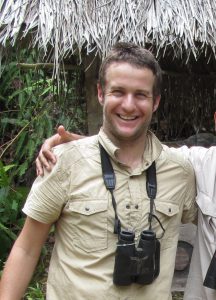New research shows conservation initiatives are often contagious, helping scientists and policymakers design programs that are more likely to be taken up.
The study led by Imperial College London with 14 researchers from around the world, including Griffith University, modelled how conservation initiatives are adopted across regions and countries until they reach ‘scale’ — a level where they can have real impact on conserving or improving biodiversity.

Dr Duan Biggs.
The research, published in Nature Sustainability, looked at 22 conservation initiatives from across the globe to see how they spread, and how fast.
The study included initiatives covering land and water, those by low to high-income countries, and those at local, national and international scales.
For example, the initiatives ranged from villages introducing protections around local marine sites to governments designating areas as international World Heritage Sites, including state and privately protected areas.
By understanding the underlying factors that lead to conservation initiatives going viral, the team identified ways new or existing initiatives could boost their uptake, helping the efforts go further.
The research suggested that one key factor was to facilitate contact between those who had already taken up a new initiative and those who might potentially adopt it.
For example, if one community that established local marine protections talked to another community considering doing something similar about what they had done and what the benefits were.
Dr Duan Biggs from Griffith University’s Environmental Futures Research Institute said: “We hope our insights into how conservation initiatives spread will help practitioners to design and implement to maximise the scale of uptake, critical for tangible, lasting impact.”
Dr Morena Mills, from the Department of Life Sciences at Imperial, said: “Conservation initiatives like managing fishing resources and offsetting land for nature are critical for protecting biodiversity and the valuable ecosystems that help provide us with clean water and air.
“We found that most of these initiatives ‘spread like a disease’, where they depend on a potential adopter catching the conservation ‘bug’ from an existing one.”
The team found that most (83 percent) of the schemes followed a slow-fast-slow model, where initial adoption is slow as few people take it up, but then grows quickly as more early adopters connect with potential adopters.
Finally, the rate slows again as all potential adopters have either taken up the scheme or refused it.
The team said further insights into what ingredients and circumstances make a conservation initiative spread successfully are needed, as no initiative they studied had the desired properties of being taken up quickly, and being taken up by the majority of adopters.
Most initiatives had one or the other of these properties, with more than half being adopted by less than 30 percent of potential adopters.
Dr Biggs added: “In our study we did not find any initiatives that were taken up relatively quickly and by a large proportion of the potential pool of adopters.
“We are seeking to understand more about how local context facilitates or hinders spread, to help more initiatives reach scale.”
The research ‘Modelling how conservation initiatives go to scale’ is published in Nature Sustainability.
